Planning a trip to Yellowstone National Park? While it’s undoubtedly a stunning destination year-round, timing your visit can make a huge difference in your experience. Understanding the worst time to visit Yellowstone can help you avoid the crowds, long lines, and harsh weather conditions that might detract from your adventure.
Whether you’re hoping for a peaceful retreat into nature or want to take in the park’s famous geysers without the overwhelming crowds, knowing when not to visit is just as important as picking the right season. In this article, the National Park Shops team will break down the factors that make certain times of the year less ideal for visiting Yellowstone, so you can plan your trip for the best possible experience.
When is worst time to visit Yellowstone National Park?
Visiting Yellowstone National Park can be an unforgettable experience, but knowing the worst time to visit Yellowstone is crucial for making the most of your trip. Late spring and early fall are often considered challenging times to visit due to unpredictable weather. While attractions like Old Faithful, Mammoth Hot Springs, and the Grand Canyon of Yellowstone are popular, they can become crowded during peak seasons, especially around Memorial Day in late May and late September.
Another factor to consider is wildfire season, which typically peaks in late August and early September. During this period, the air quality can be compromised, and visibility may be reduced, affecting your ability to fully enjoy the park’s scenery. It’s also essential to maintain a safe distance from wildlife and prepare for rapidly changing weather conditions when visiting.
>> Read More: 8 Interesting Facts About Yellowstone National Park
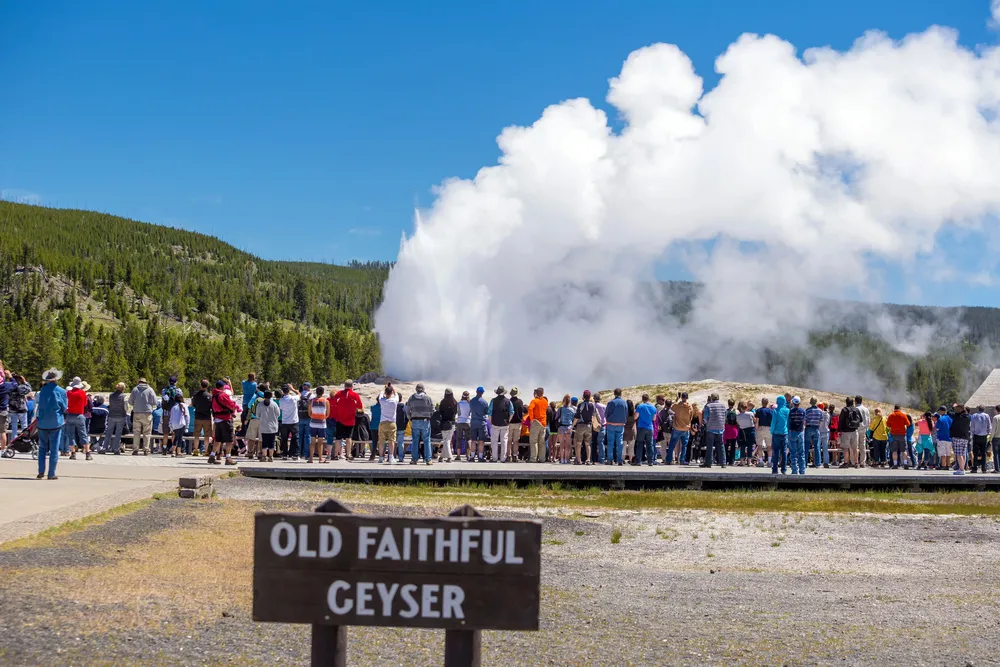
Factors to Consider When Planning
When planning your trip, the worst time to visit Yellowstone often coincides with unpredictable winter storms and colder temperatures. These conditions, especially in the park’s higher elevations, can make travel difficult. Additionally, seasonal road closures and fire season can affect accessibility and the overall experience. Wildlife behavior during these periods also varies, with some animals migrating or behaving differently in the colder months.
Personal Experiences: Timing Your Visit
From personal experience, visiting Yellowstone during the winter months was less than ideal. Limited visitor center hours and challenging weather conditions can hinder your ability to fully explore the park. I highly recommend visiting between late spring and early October for better weather and to avoid the risks associated with wildfire season.
Overview of Yellowstone by Month
Yellowstone National Park experiences a variety of climates throughout the year, which significantly affects visitor numbers and the types of activities available. In January, the park is covered in snow, making it an ideal destination for winter sports. However, road closures can make it difficult to access some areas, which may be considered the worst time to visit Yellowstone if you’re looking for easy accessibility.
February offers similar conditions, but with fewer crowds, giving you a chance to explore the park in relative peace. If you’re seeking solitude, this might be the perfect time for you. As March rolls in, Yellowstone transitions into late spring, with melting snow slowly revealing its stunning landscapes and the return of wildlife.
Let’s take a month-by-month look at Yellowstone National Park to learn more through the details below:
Yellowstone in January
January in Yellowstone presents a unique and peaceful experience, with snow-covered landscapes and fewer visitors. During this time, you can enjoy the breathtaking sight of the Old Faithful geyser set against a white, snowy backdrop, visit the iconic Grand Canyon of Yellowstone, and explore the Mammoth Hot Springs. While some roads may be closed due to winter conditions, activities like skiing and snowshoeing remain popular.
However, January can also be considered the worst time to visit Yellowstone if you prefer easier access to the park’s full range of attractions, as some areas may be harder to reach. Visitors should be sure to dress warmly and keep a safe distance from wildlife. Despite being the coldest month of the year, January is still a great time to experience the tranquil, winter beauty that makes Yellowstone so special.
Yellowstone in February
February in Yellowstone offers a peaceful escape with its snow-covered landscapes and frozen waterfalls. The park’s geysers, including the famous Old Faithful, create a mesmerizing scene in the winter setting. It’s a great time to explore the Mammoth Hot Springs and the Grand Canyon of Yellowstone, with fewer crowds to contend with. Although the temperatures remain low, visitors can enjoy the park’s beauty in tranquility. However, for those seeking milder weather and easier access, February could be considered the worst time to visit Yellowstone. Late spring, on the other hand, offers a much more pleasant climate for exploring the park.
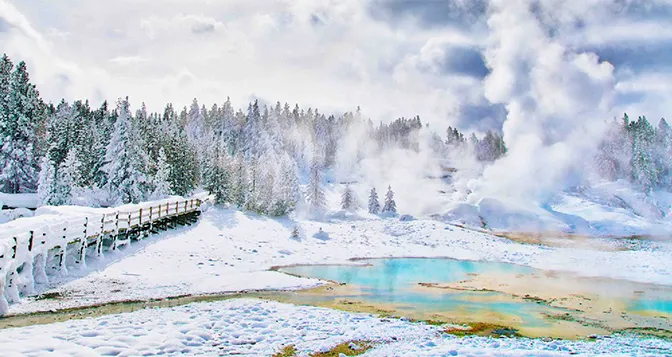
Yellowstone in March
March can be a great time to visit Yellowstone, as the Old Faithful geyser puts on a spectacular display, and the Mammoth Hot Springs are especially beautiful during this period. While the weather can be unpredictable, late spring brings a sense of calm to the park. However, it’s important to note that some roads and facilities may still be closed due to snow, making it the worst time to visit Yellowstone if you’re seeking full access. Despite this, March offers the chance to experience the park without the summer crowds. Be sure to check for any specific alerts or closures before you go.
Yellowstone in April
April in Yellowstone National Park marks the transition from winter to spring, offering visitors a chance to see the park in a beautiful state of change. Popular attractions like Old Faithful and Mammoth Hot Springs are particularly stunning as the landscape begins to transform. Late April is a best time to visit Yellowstone before the Memorial Day crowds arrive and all park roads open to vehicles.
However, it’s important to keep in mind that late spring can also bring the start of the wildfire season, making it the worst time to visit Yellowstone if you’re sensitive to smoke or air quality. The average high temperature in late April is around 48°F, offering comfortable conditions to explore the Grand Canyon of Yellowstone and other natural wonders. Just be sure to check for any alerts, as it could also be considered the worst time to visit Yellowstone if you’re unprepared for potential closures or wildfire risks.
Yellowstone in May
In late spring, Yellowstone in May begins to come alive, with wildflowers blooming across the park. The average high temperature is comfortable, making it an ideal time to explore and witness the park transitioning from winter to spring. During this period, visitors can also see wildlife with their young, but it’s crucial to maintain a safe distance as animals can be more active.
Popular attractions like Mammoth Hot Springs and Old Faithful are not to be missed. However, it’s important to note that Memorial Day weekend marks the start of the busy summer season, and this can be the worst time to visit Yellowstone if you’re looking to avoid large crowds. With more visitors arriving, you may find the park becoming increasingly crowded, especially in late May, making it the worst time to visit Yellowstone if solitude is what you seek.
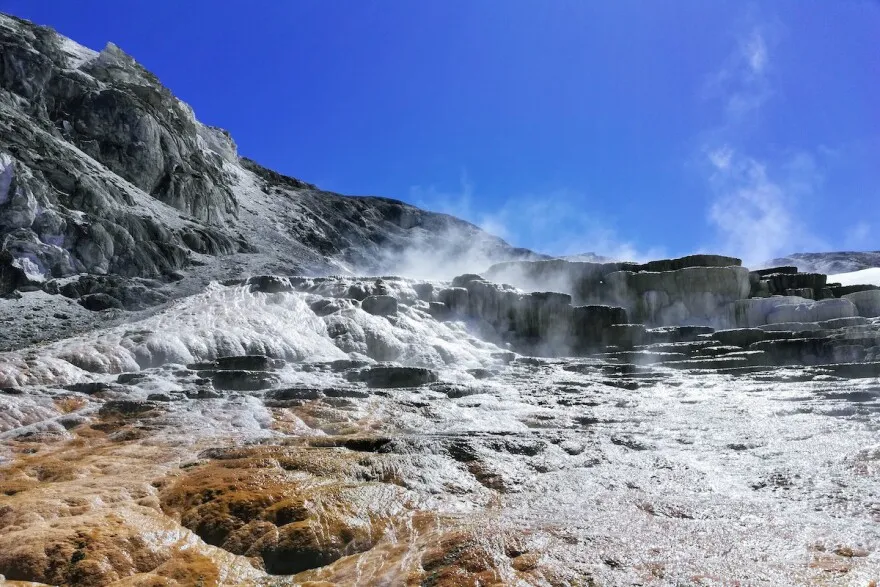
Yellowstone in June
June in Yellowstone is a fantastic time to visit, as the park is in full bloom and the weather is mild. Wildlife is abundant, and visitors can enjoy classic attractions like the Old Faithful geyser, the Grand Canyon of Yellowstone, and Mammoth Hot Springs. However, it’s important to note that June marks the beginning of the wildfire season, making it the worst time to visit Yellowstone if you’re sensitive to smoke or air quality. With longer daylight hours and average highs that are perfect for outdoor activities, late spring provides a great opportunity to experience the park’s beauty before the summer crowds arrive. But be prepared, as this could also be considered the worst time to visit Yellowstone if you’re looking for a quieter experience.
Yellowstone in July
July marks the peak of summer in Yellowstone, offering perfect conditions for outdoor activities. With all roads open, it’s an excellent time for wildlife viewing, and the warm temperatures combined with long daylight hours make it ideal for a vacation. Visitors can enjoy the park’s lush flora and abundant wildlife, including adorable baby animals. However, it’s also the worst time to visit Yellowstone if you’re seeking a quieter, more peaceful experience, as July attracts large crowds. This is the prime time to see grizzly bears, black bears, and bighorn sheep, making for an unforgettable wildlife experience in one of the most stunning natural settings.
Yellowstone in August
August in Yellowstone National Park brings warm weather, making it an ideal time for outdoor activities. The park is teeming with baby animals and vibrant wildflowers, offering excellent opportunities for wildlife viewing. Visitors can also enjoy the park’s famous hot springs, perfect for relaxing during a road trip, along with pleasant daytime temperatures.
Although it’s the peak season, August still provides longer, warmer days with fewer visitors than in July. For those looking to explore the park’s higher elevations and cooler temperatures, this is a perfect time to visit. However, be aware that the influx of people could still affect the experience, making it the worst time to visit Yellowstone for those seeking peace and solitude.
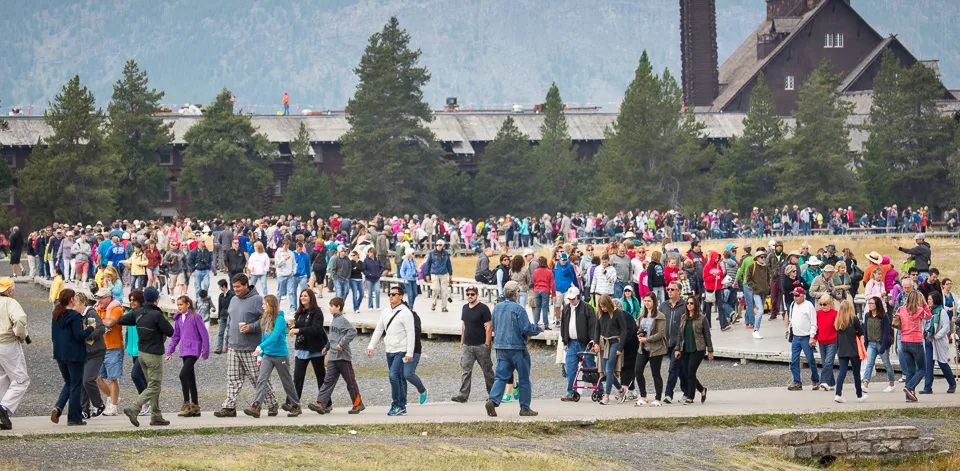
Yellowstone in September
September in Yellowstone offers mild weather and fewer crowds, making it an ideal time to explore the park’s lower elevations and observe wildlife. It’s a great month to see grizzly bears and bighorn sheep in their natural habitat, and the cooler temperatures make outdoor activities more enjoyable.
Additionally, September provides fantastic opportunities for wildlife photography during the peak viewing season. However, it’s important to note that this could also be considered the worst time to visit Yellowstone if you’re not prepared for potential road closures and colder temperatures. Make sure to bring warm clothing to stay comfortable during your visit.
Yellowstone in October
October in Yellowstone marks the beginning of winter, bringing unpredictable weather. For winter sports enthusiasts, it’s an ideal time as the park transforms into a beautiful winter wonderland. Visitors can enjoy cooler temperatures and admire iconic sights like the Grand Prismatic Spring, while also spotting grizzly bears, bighorn sheep, and black bears. However, October can also be the worst time to visit Yellowstone due to the challenges of winter storms, inclement weather, and road closures. These conditions may limit access to certain areas, making it less convenient for some visitors.
Yellowstone in November
As November ushers in winter, Yellowstone faces cold temperatures and unpredictable weather, making it the worst time to visit Yellowstone for many travelers. Road conditions and accessibility can be significantly affected by inclement weather. However, despite these challenges, visitors can still enjoy wildlife viewing, including sightings of grizzly bears, bighorn sheep, and black bears, all with fewer crowds. Although the weather can be harsh, it’s still possible to experience some of Yellowstone’s most incredible features during this time, making it a unique, albeit challenging, season to visit.
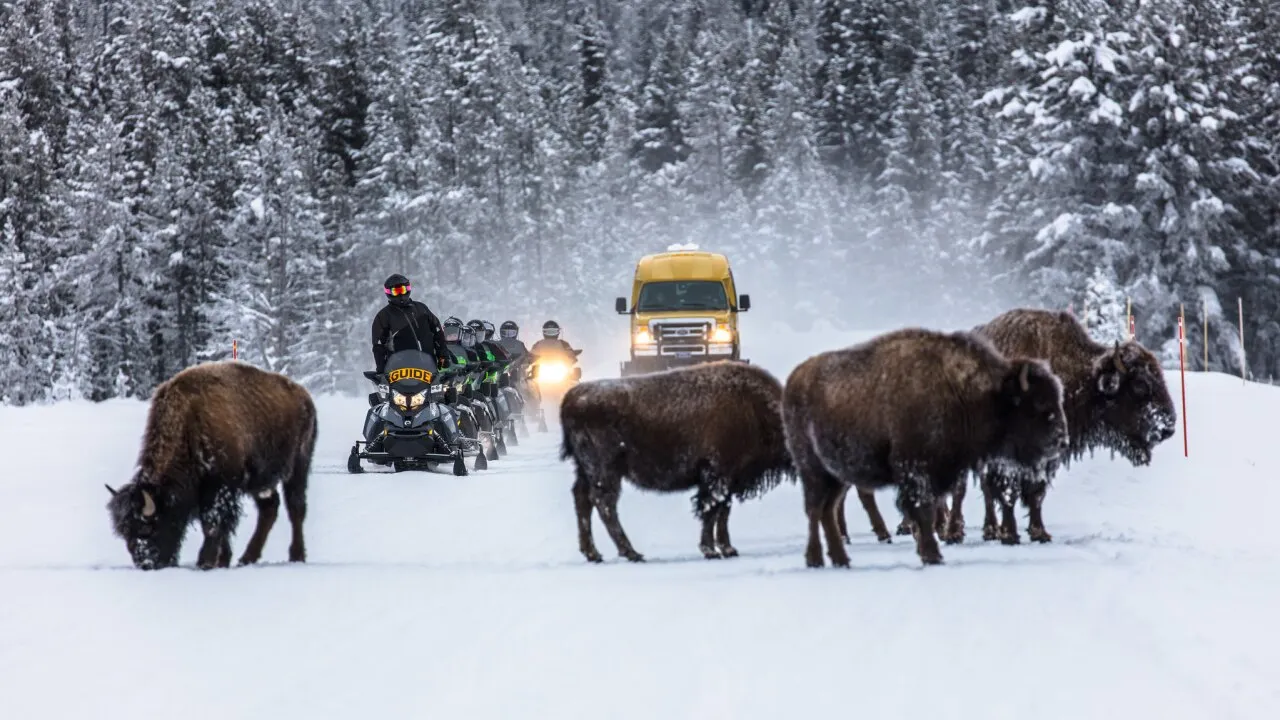
Yellowstone in December
December in Yellowstone marks the heart of winter, bringing cold temperatures and unpredictable weather, which can make it the worst time to visit Yellowstone for those looking for easy access and convenience. While visitors can experience the park’s winter wonderland and see the Grand Prismatic Spring in a unique, snow-covered setting, the cold conditions often lead to road closures and challenging travel conditions. Despite these obstacles, December offers a quieter experience with fewer crowds.
Best Time to visit Yellowstone to avoid Crowds
The ideal time to visit Yellowstone to avoid the crowds is during the winter months, from December 15th to March 15th. However, keep in mind that holiday weeks and weekends should still be avoided, as they can be busy even during this period. If you’re looking to visit when the crowds are still low but most of Yellowstone’s top attractions are accessible, consider planning your trip for the first or second week of May. This period offers a balance, though it might still be considered the worst time to visit Yellowstone for those who prefer a completely crowd-free experience.
Worst Time to visit Yellowstone to avoid Crowds
The worst time to visit Yellowstone to avoid crowds is undoubtedly July, as this is when the park sees the highest number of visitors.
If July is the only time you can visit, or if you’re drawn to the park’s vibrant colors during this month, try to avoid the busiest spots, such as Old Faithful, Artist Point, and the Grand Prismatic Spring, between 10 a.m. and 4 p.m. To make the most of your visit and minimize the crowds, plan to visit early in the morning or later in the evening.
Planning for the Worst Time to visit Yellowstone
Visiting Yellowstone National Park requires careful planning, especially when considering when to go. If you’re aiming to avoid the crowds, the worst time to visit Yellowstone is during the peak summer months. However, late spring or early October can be an ideal time to visit, as you’ll avoid the wildfire season and enjoy moderate temperatures.
For a more peaceful experience, consider late April or late September, when you can explore the park’s highlights while steering clear of large crowds. Don’t forget to pack appropriately for the weather and look for cost-saving opportunities during off-peak times, such as Memorial Day.
Best Activities During the Worst Times
In the worst time to visit Yellowstone, temperatures can drop, but the cooler weather brings wildlife to life. It’s an excellent time for wildlife viewing, with fewer crowds offering a more serene experience. The spring season also allows you to spot baby animals, adding an extra charm to your visit. During the colder months, take advantage of winter sports like snowshoeing or cross-country skiing. The geothermal features, including the Grand Prismatic Spring, are always a must-see.
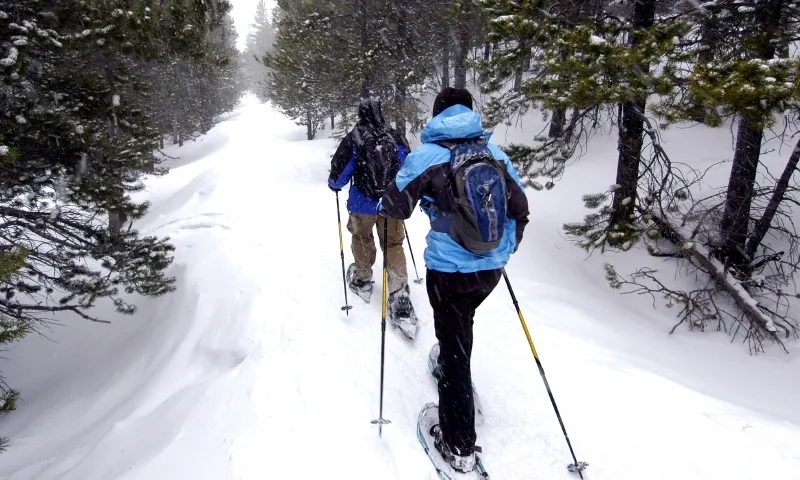
Alternative Places to Visit
If you’re looking for alternatives near Yellowstone, consider exploring Grand Teton National Park just south of Yellowstone. The town of Jackson Hole is perfect for shopping, dining, and outdoor fun, while the northeast entrance offers picturesque views of Cooke City. Additionally, Cody, Wyoming, home to the Buffalo Bill Center of the West, provides a fascinating cultural experience. Don’t forget a scenic road trip to West Yellowstone, an iconic gateway to the park.
How Bad Can the Worst Times Be?
Even during the worst time to visit Yellowstone, the experience can still be amazing. The lower number of visitors means a more peaceful, tranquil environment. By understanding when to visit and being prepared for cooler temperatures and unpredictable weather, you can enjoy a truly unique trip. Even during the worst times, Yellowstone’s beauty and allure will leave you in awe.
Conclusion
Understanding the worst time to visit Yellowstone can be just as valuable as knowing the best. Harsh winter conditions, limited access to roads, unpredictable weather, and overcrowded peak-season months can all impact your experience. By identifying and avoiding these challenging times, you can plan a more enjoyable and stress-free adventure to this iconic national park.
With this insight in hand, you’re better prepared to make the most of your visit, choosing a season that aligns with your travel goals and comfort level. Thoughtful planning ensures your trip to Yellowstone is as memorable and magical as it should be.
Read More:

